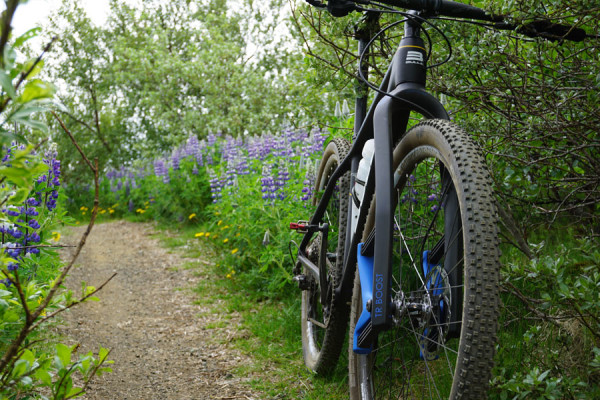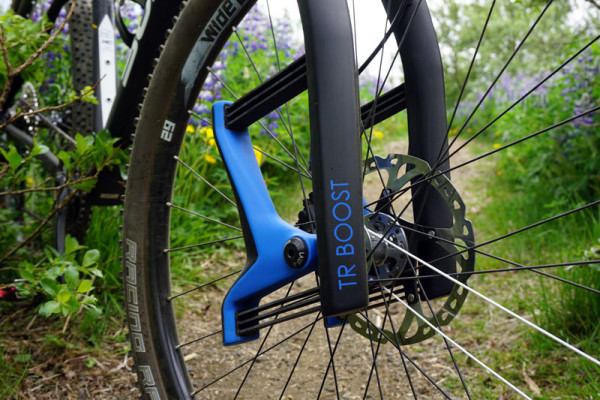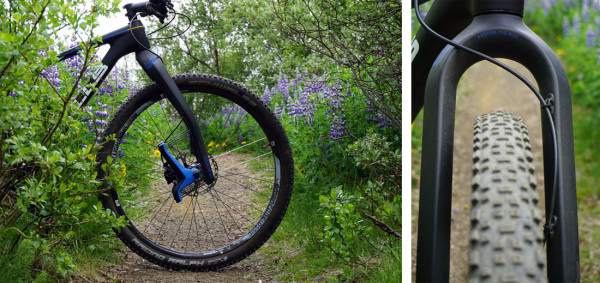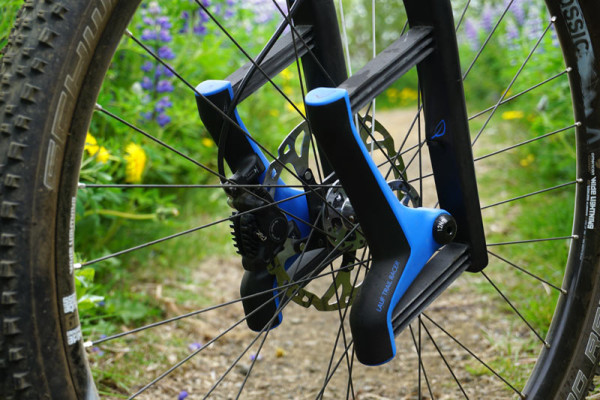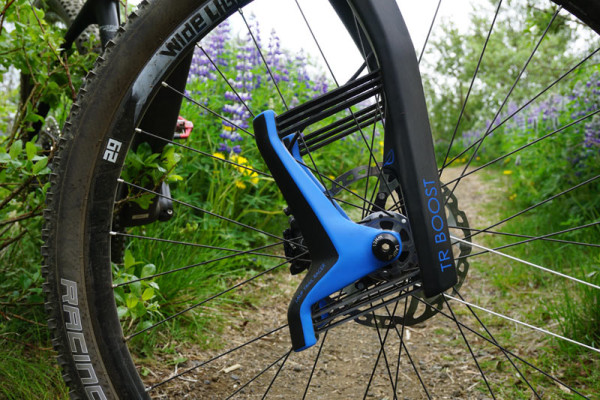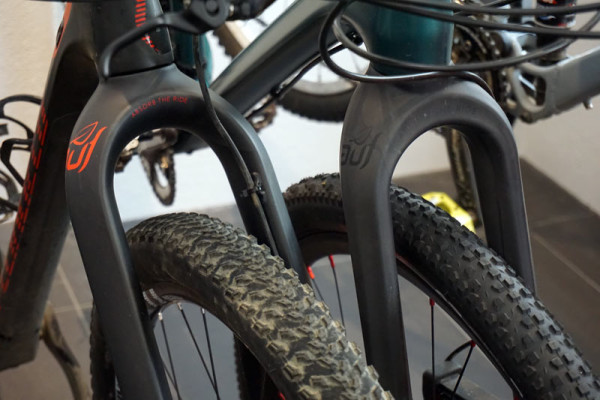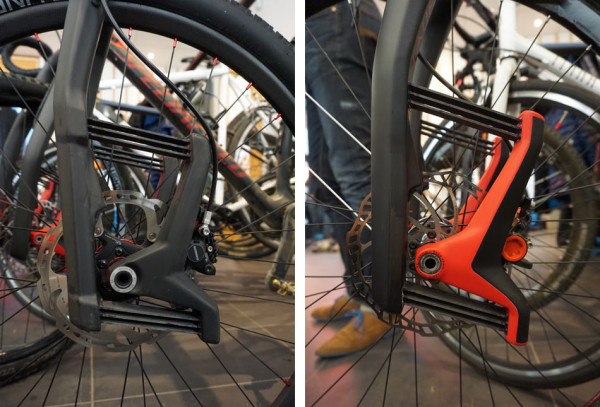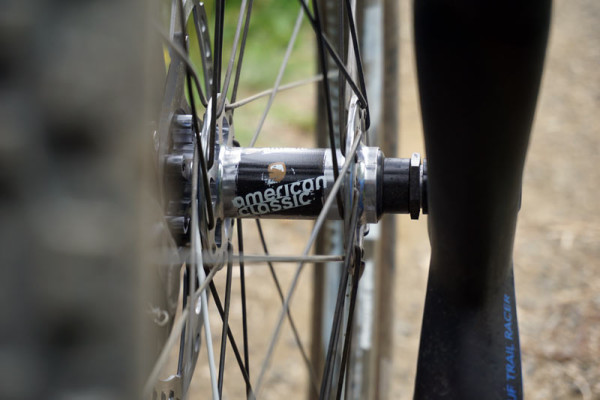Lauf Forks, whose unmistakably unique leaf spring suspension forks garner stares and suppositions, have just unveiled the second generation of their Trail Racer 29er fork. Called TR Boost (for Trail Racer Boost), it widens the legs to accept the new 110mm Boost front hub standard. That gave them the opportunity to further refine the overall design, leading to improvements in form and function throughout.
Spring on down for more…
The new TR Boost fork comes in at a claimed 1040g, up a bit from the claimed 980g for the original (and still available) Trail Racer 29er fork. They did mention they might still be able to carve a few more grams out of it, which wouldn’t be surprising considering our original test fork weighed in at just 971g.
A bit more weight is to be expected when things grow a bit wider, but there’s more to it than that.
The shoulders of the crown are deeper and thicker, with a few grams worth of extra carbon moving to this area to reinforce it. The inside width grows 10mm to accommodate the Boost axle width. The bigger cross sections of the shoulders were done to make the fork stiffer laterally and fore/aft. Some of their top testers said the fore/aft improvements are noticeable under really, really hard front braking, reducing brake shudder. The lateral stiffness of the fork was already very good, but “parking lot tests” where people would lean the bike halfway over and press down on it would show uneven spring compression and enough flex to lean the tire closer to one leg. No, you aren’t likely to ever experience that under real world riding conditions, but they figured they’d go ahead and beef it up anyway to increase showroom appeal.
The rake increased by 1mm to 49mm to improve stability at speed. The axle to crown remains at 485mm. It wouldn’t be a proper Boost fork without fitting the poster child for changing standards, so yes, a 27.5+ wheel and tire will fit in it just fine. Max tire sizes are 29 x 2.5 and 27.5 x 3.0. For now, there’s no standard 27.5 Boost fork, just this 29er that’ll work with 27.5+.
The unsprung sections are unchanged, weighing in at about 260g for the pair.
The same two spring rates will also be offered – one for riders 143lb (65kg) and up, and a lighter one for riders under 154lb (70kg).
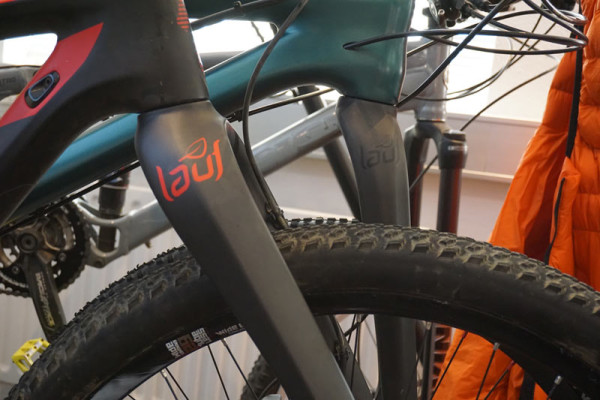
With the functional changes come aesthetic ones. The new crown and uppers are much, much deeper. This improved fore/aft rigidity to prevent it from flexing backward too much under really hard front braking.
The legs also got a bit wider, which improved lateral stability. The front edge became a little sharper, without the flatter face of the original.
Those wider, smoother legs go all the way down, giving the entire piece a smoother look without the bulges around the leaf spring insertion point on the originals (left).
Lauf says they had it ready before Rockshox and Fox launched their Boost forks, so they’ve been working on it for a little while. Available in September, retail will be $990. The original Trail Racer 29er and 27.5 forks remain unchanged.
They had a few test bikes fitted with American Classic’s new Boost hubs, which use a design that only pushes the left side’s spoke flange outward to improve the tension balance and triangulation rather than push both flanges out to the extremes.
Unfortunately, snow cover kept us from the most amazing of singletrack trails to test the TR Boost fork, but the limited number of test bikes (which were outfitted with narrow, almost semi-slick tires) wouldn’t have offered the very best of test conditions to validate their claims of improved stiffness. That said, we haven’t noticed any lack of stiffness with their original model on our long term test bike, which seems to be the general consensus among anyone who’s actually ridden one, but improvements are improvements. And if you have to redesign it anyway, might as well make improvements.
Look for more coverage from our visit to Lauf’s HQ in Reykjavik, Iceland, soon!
